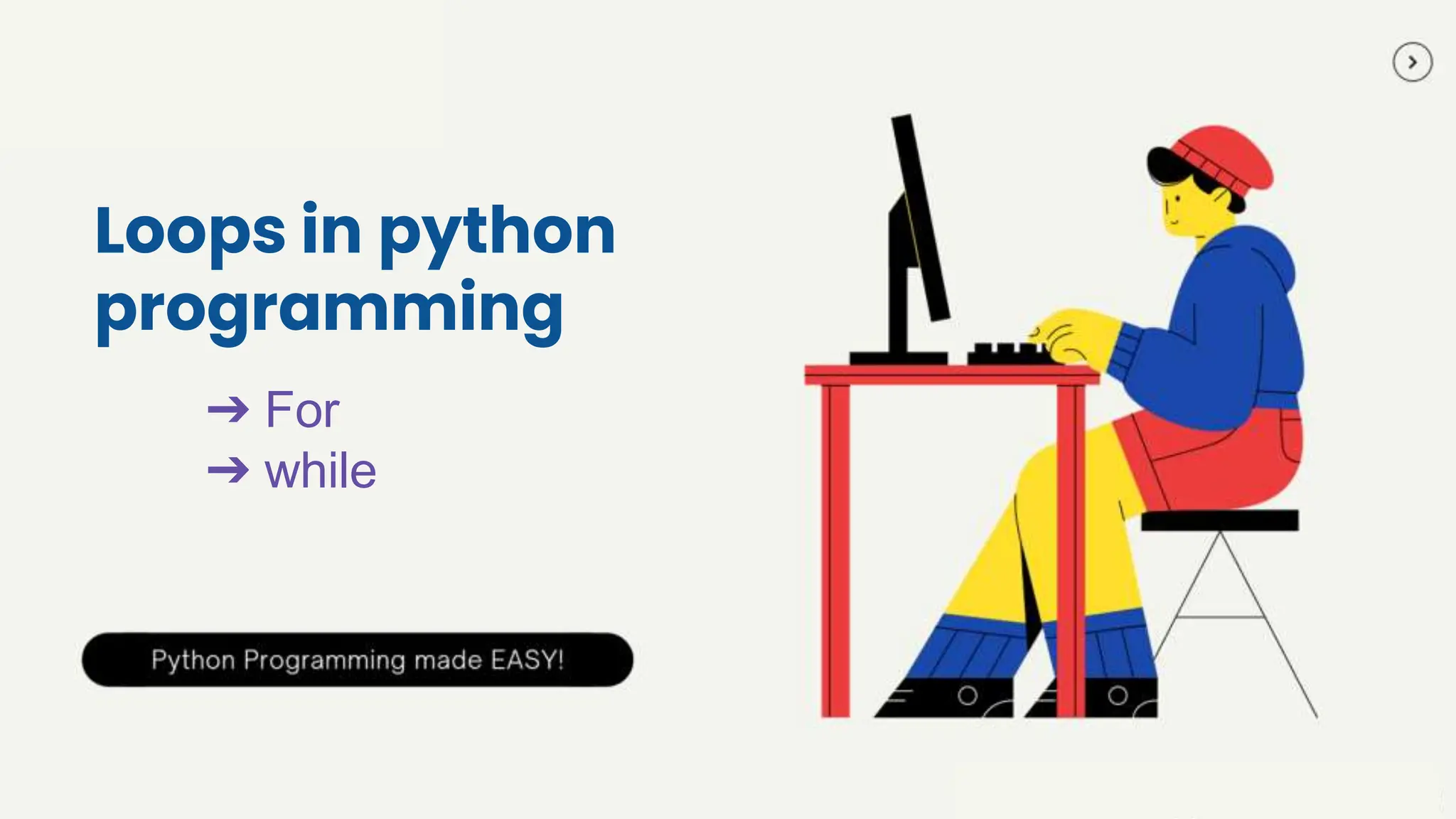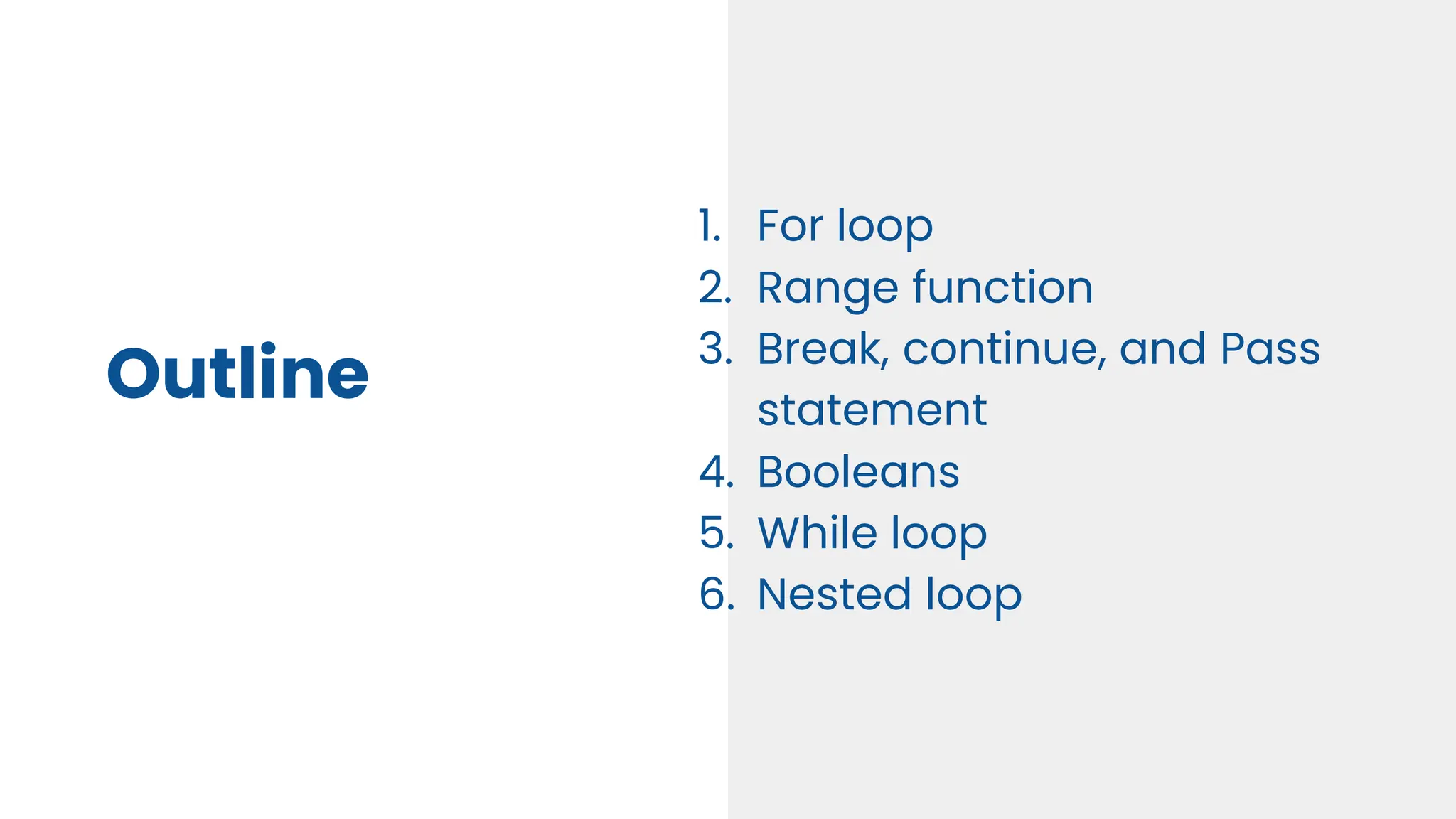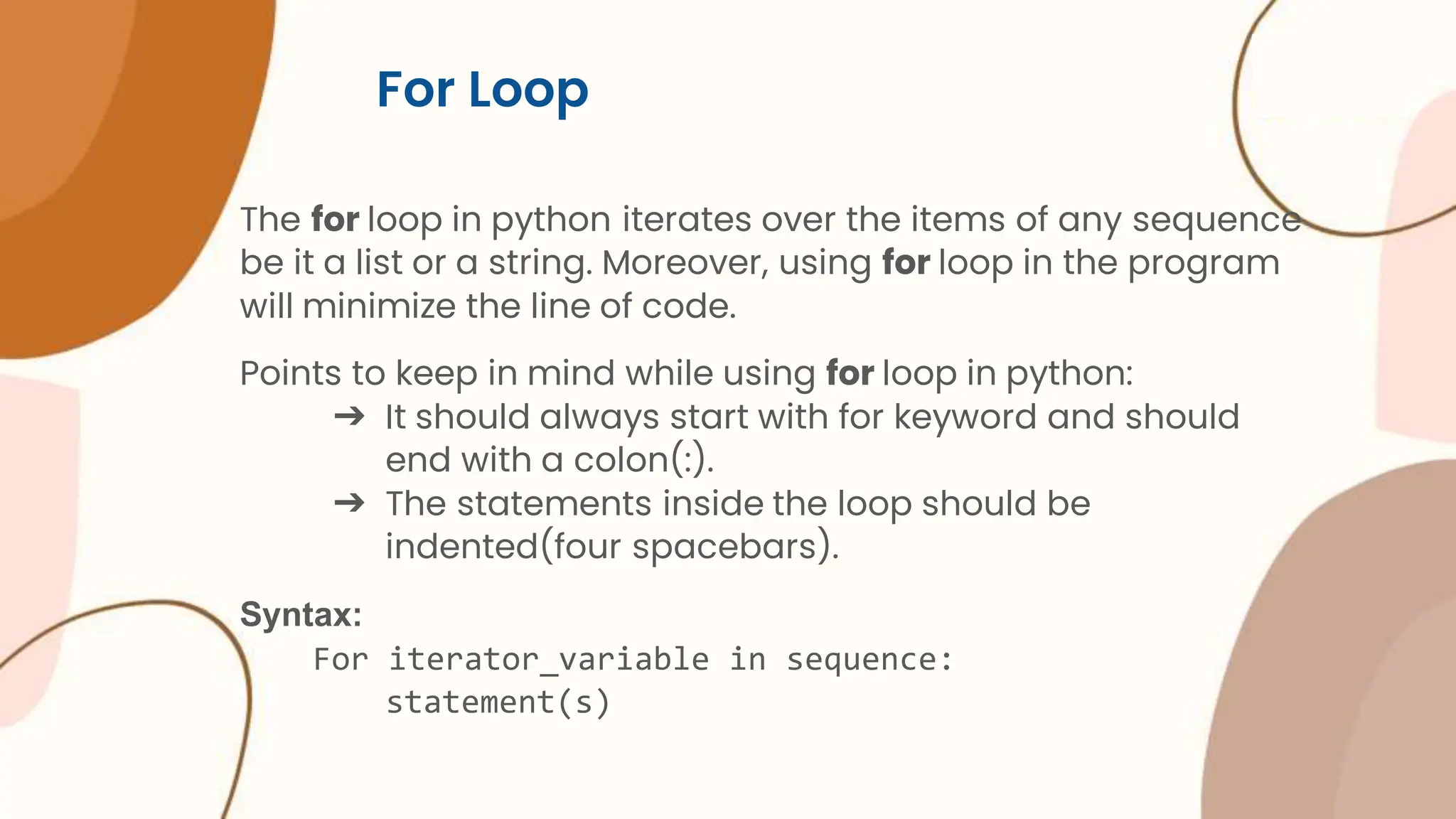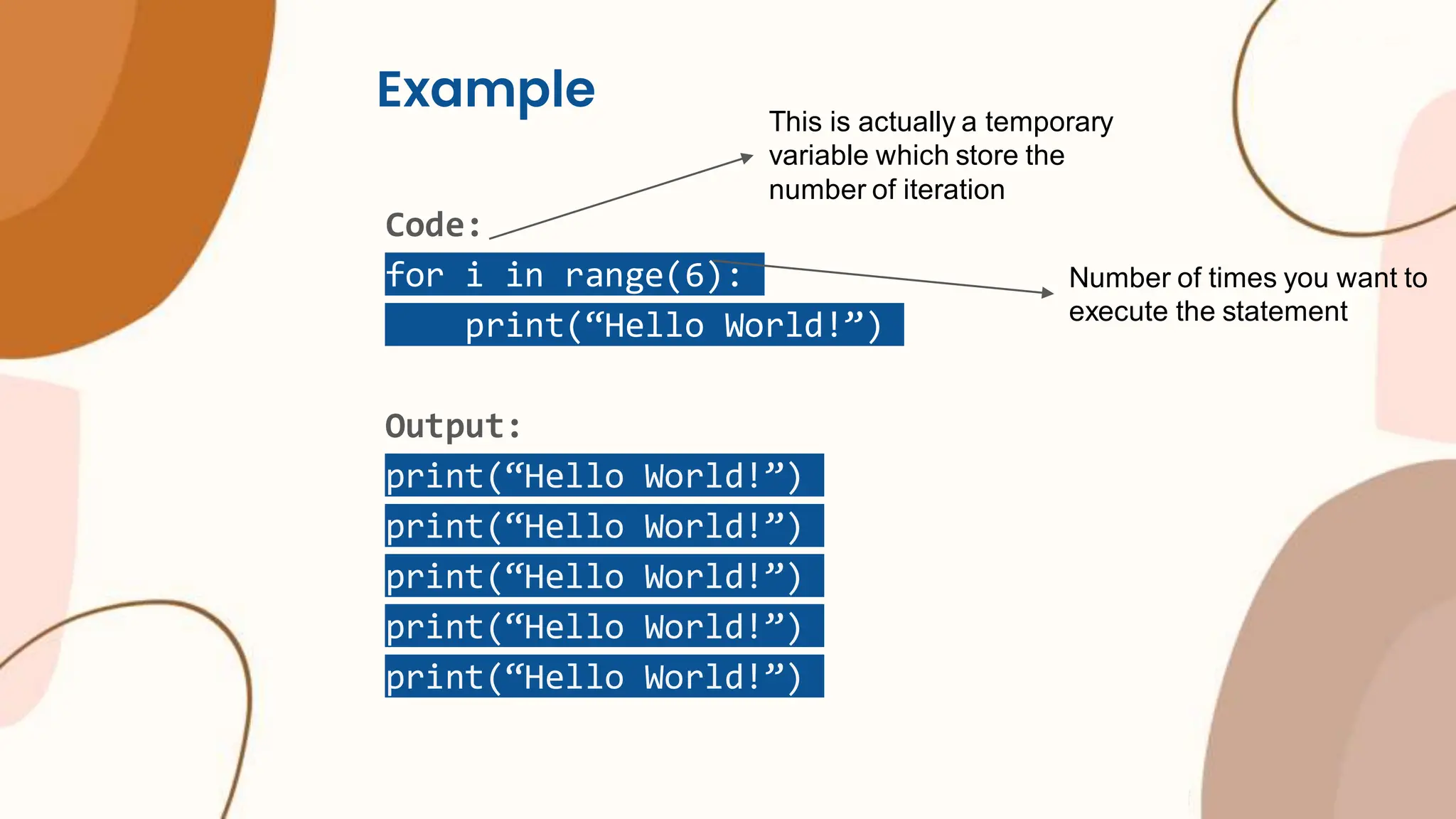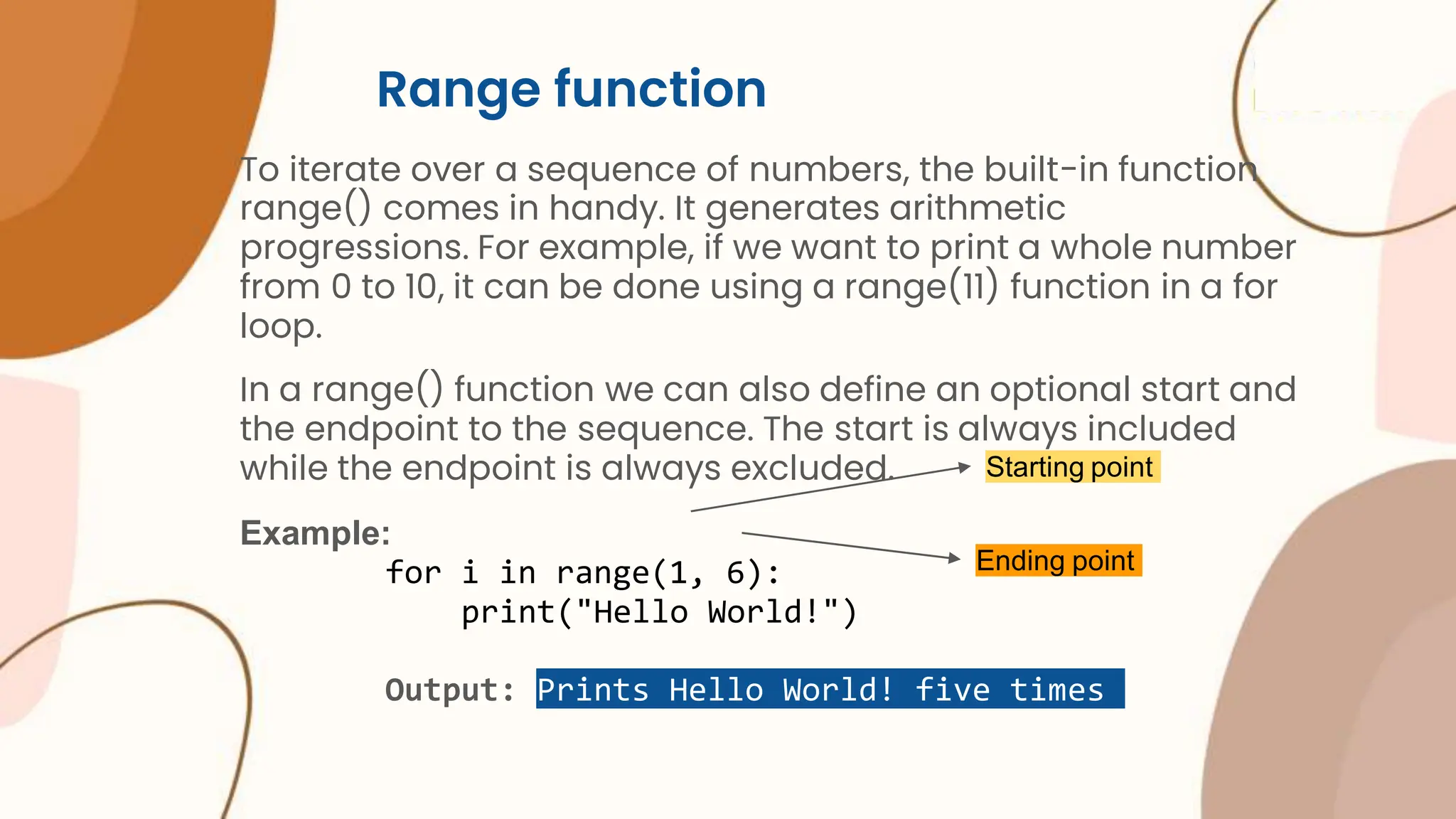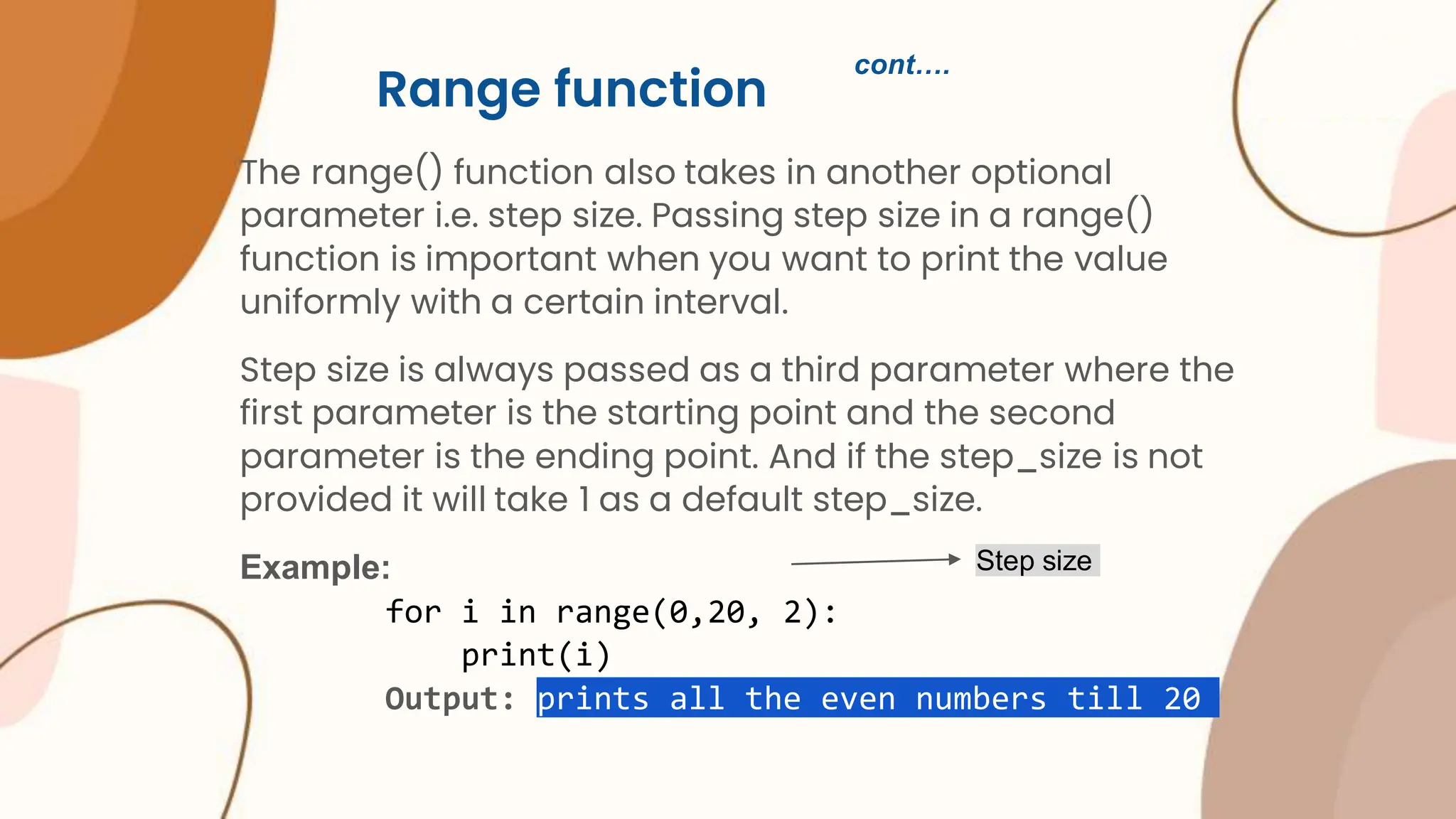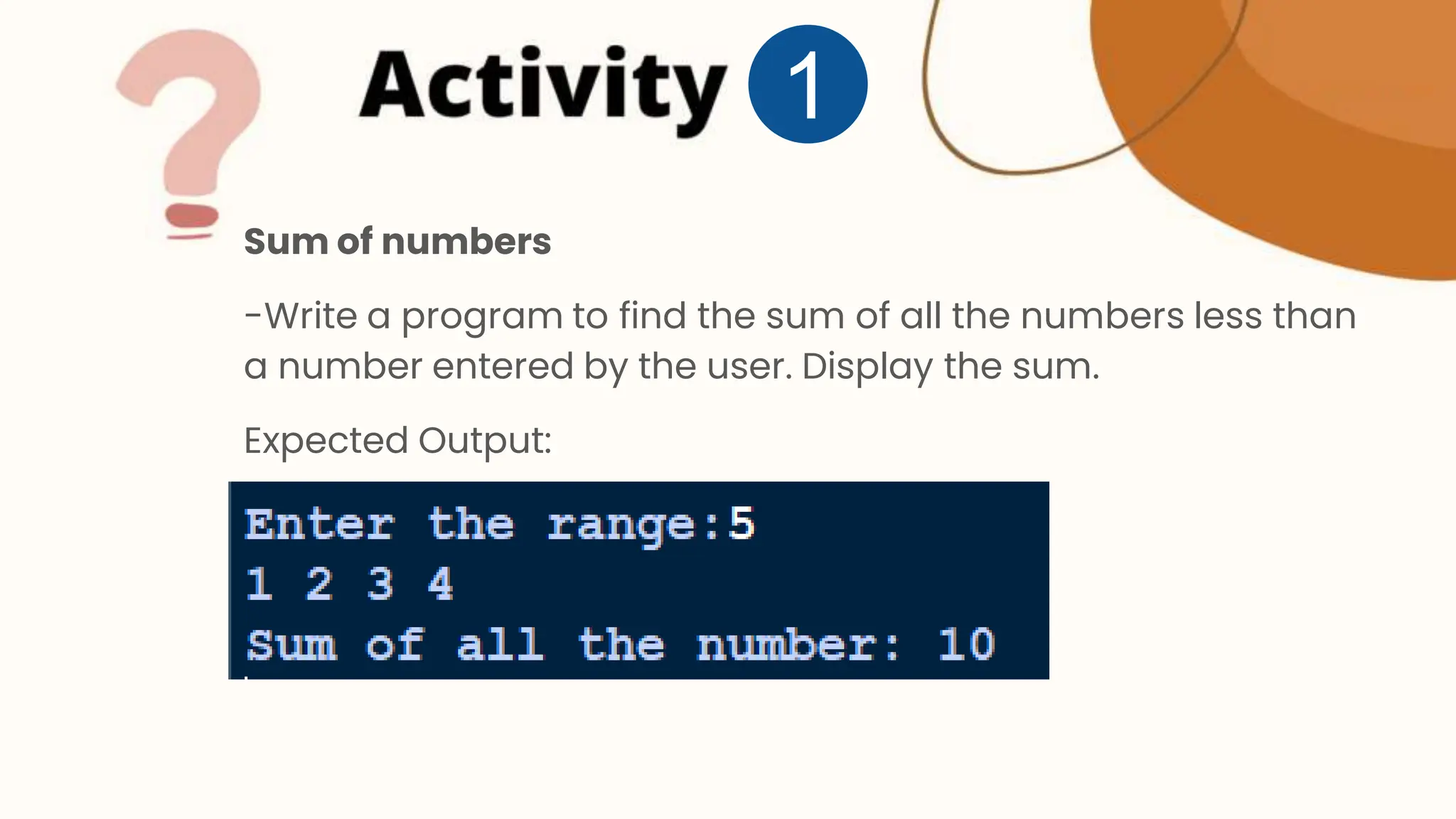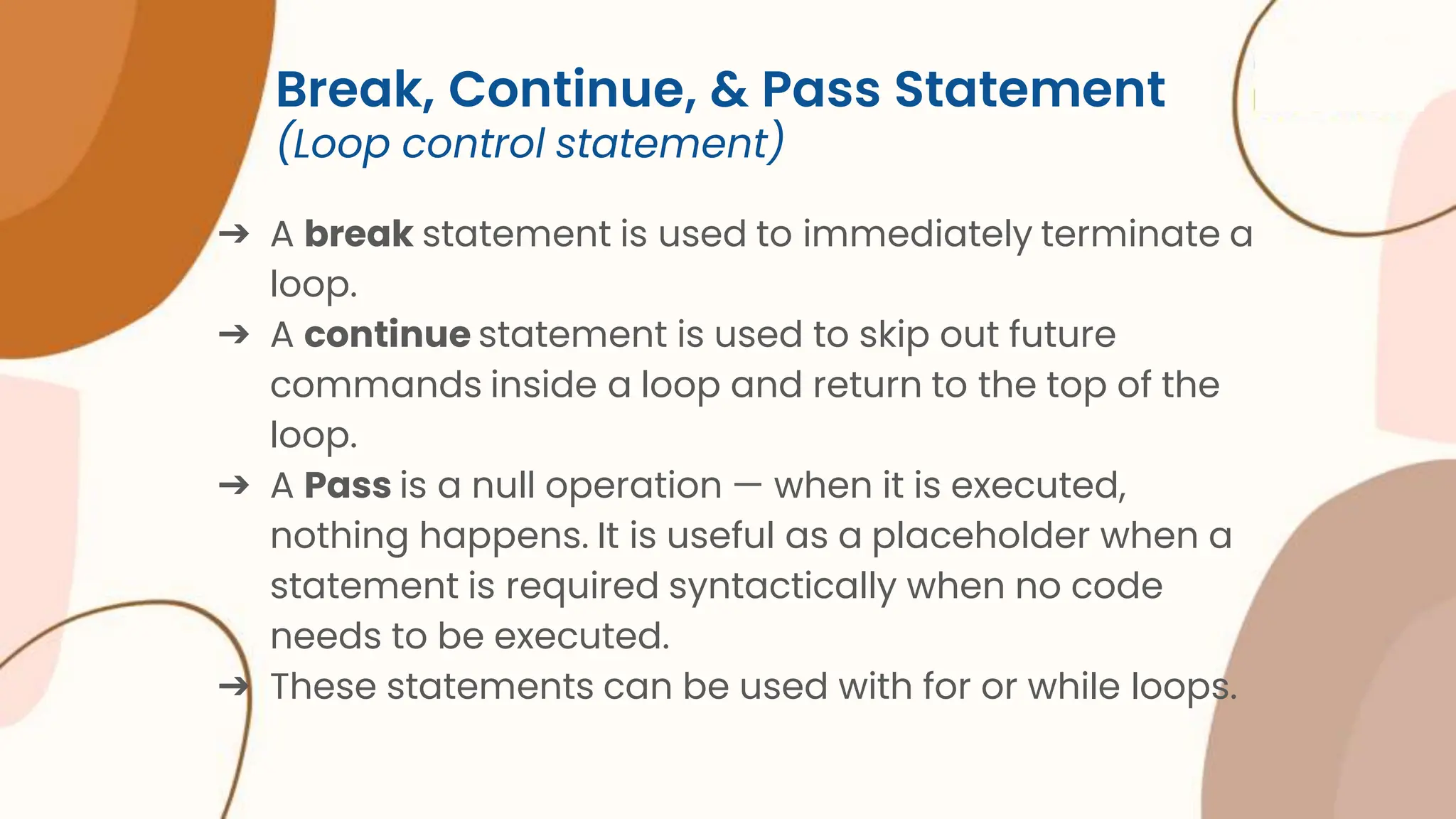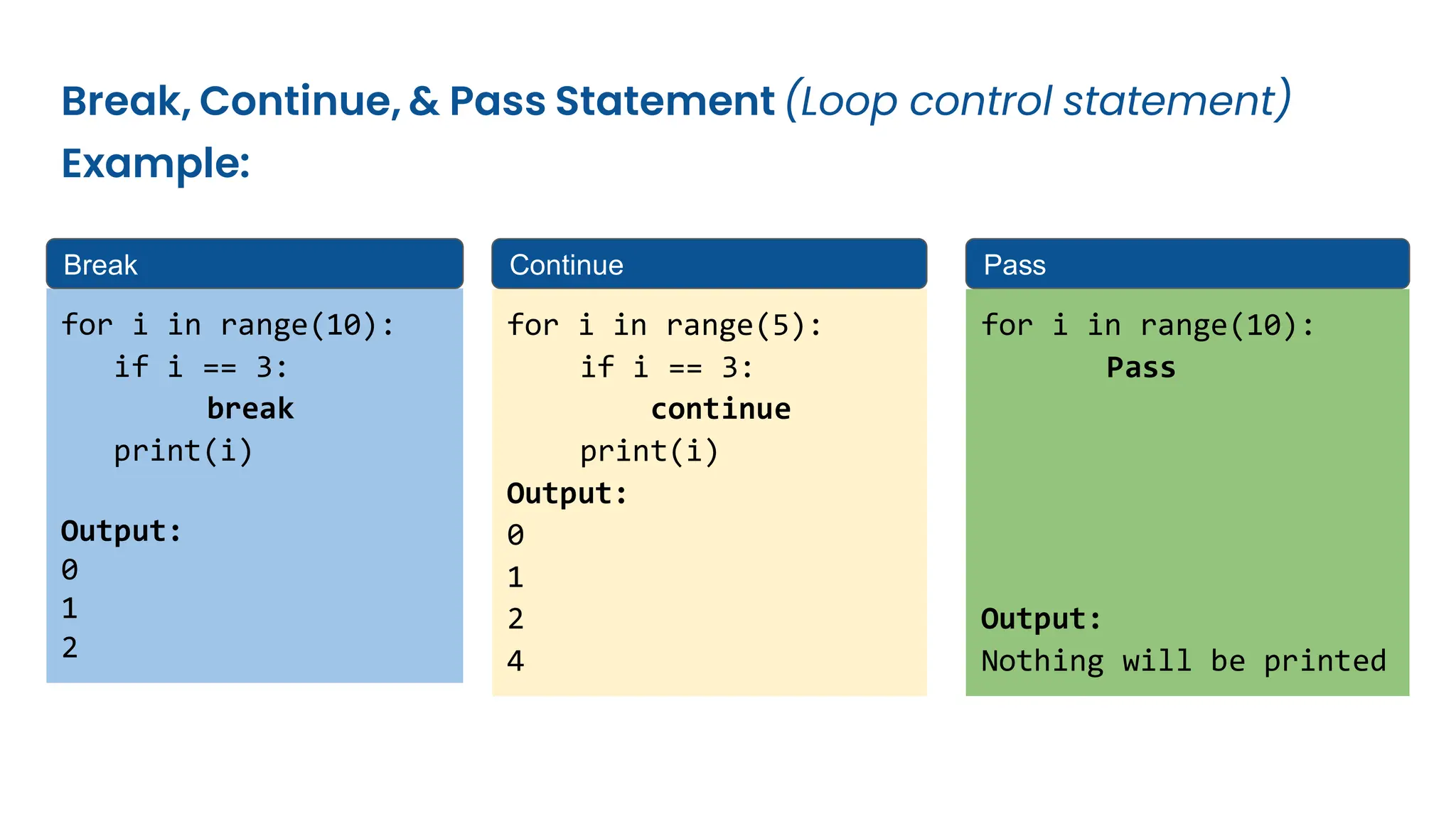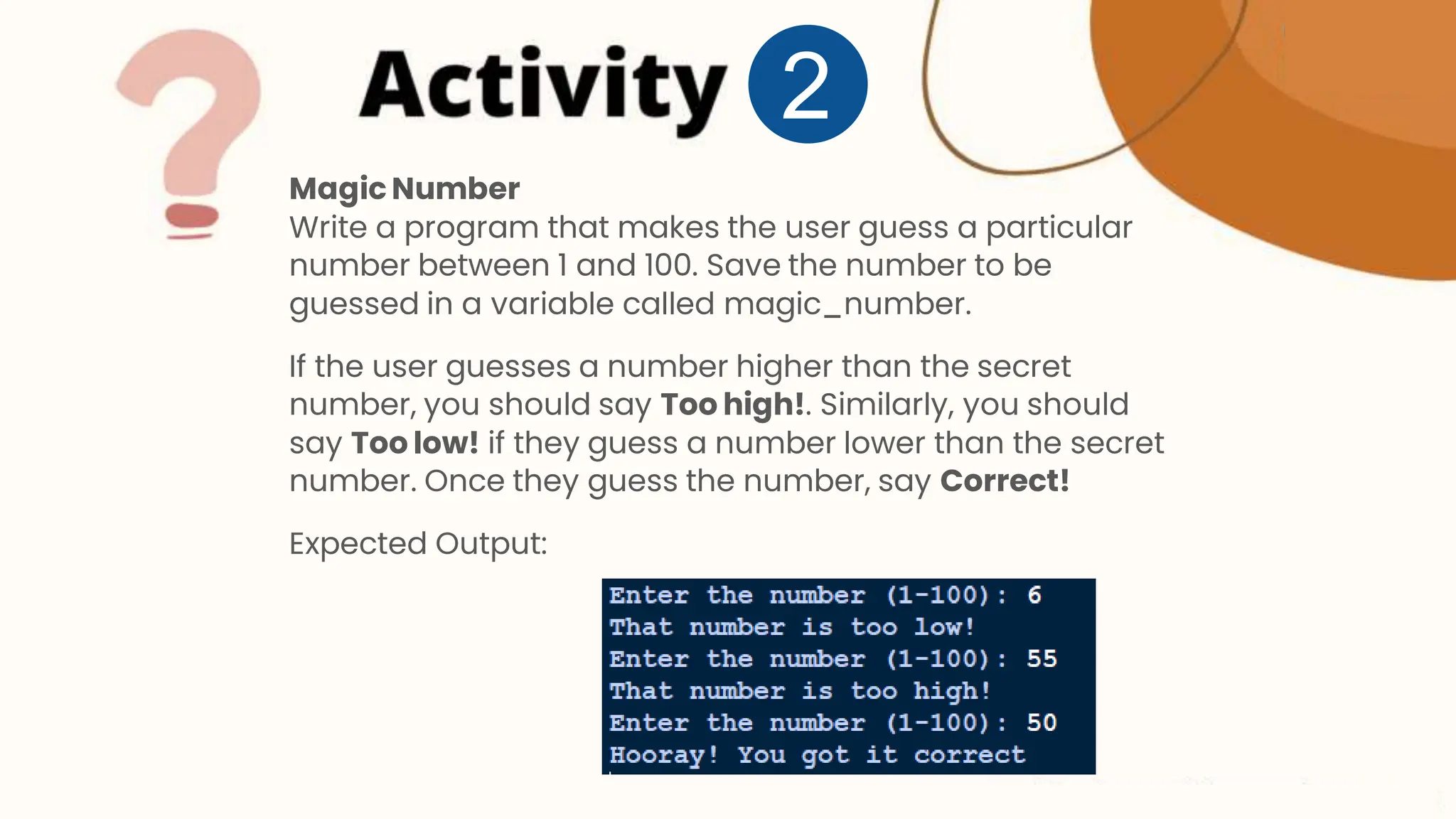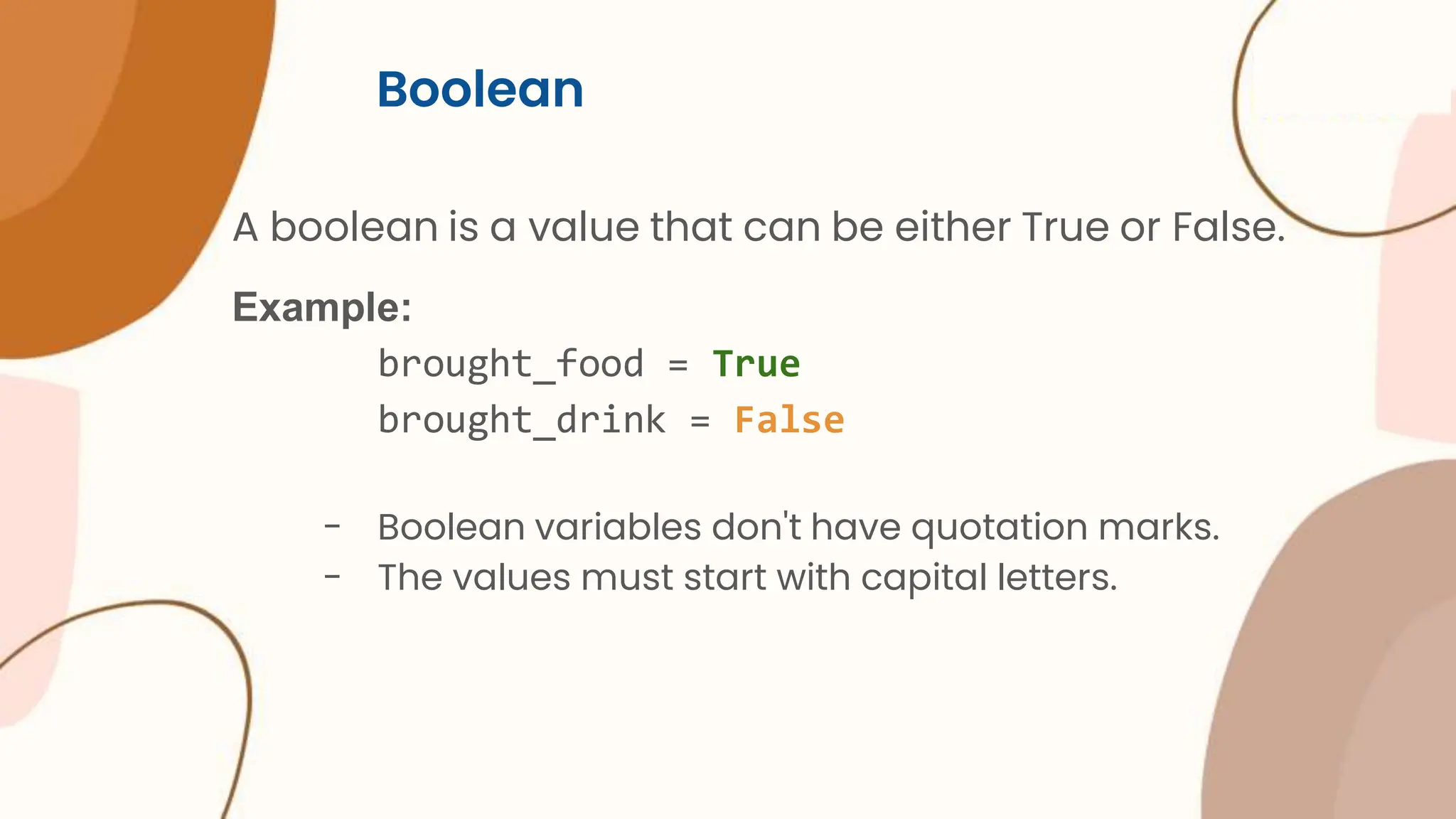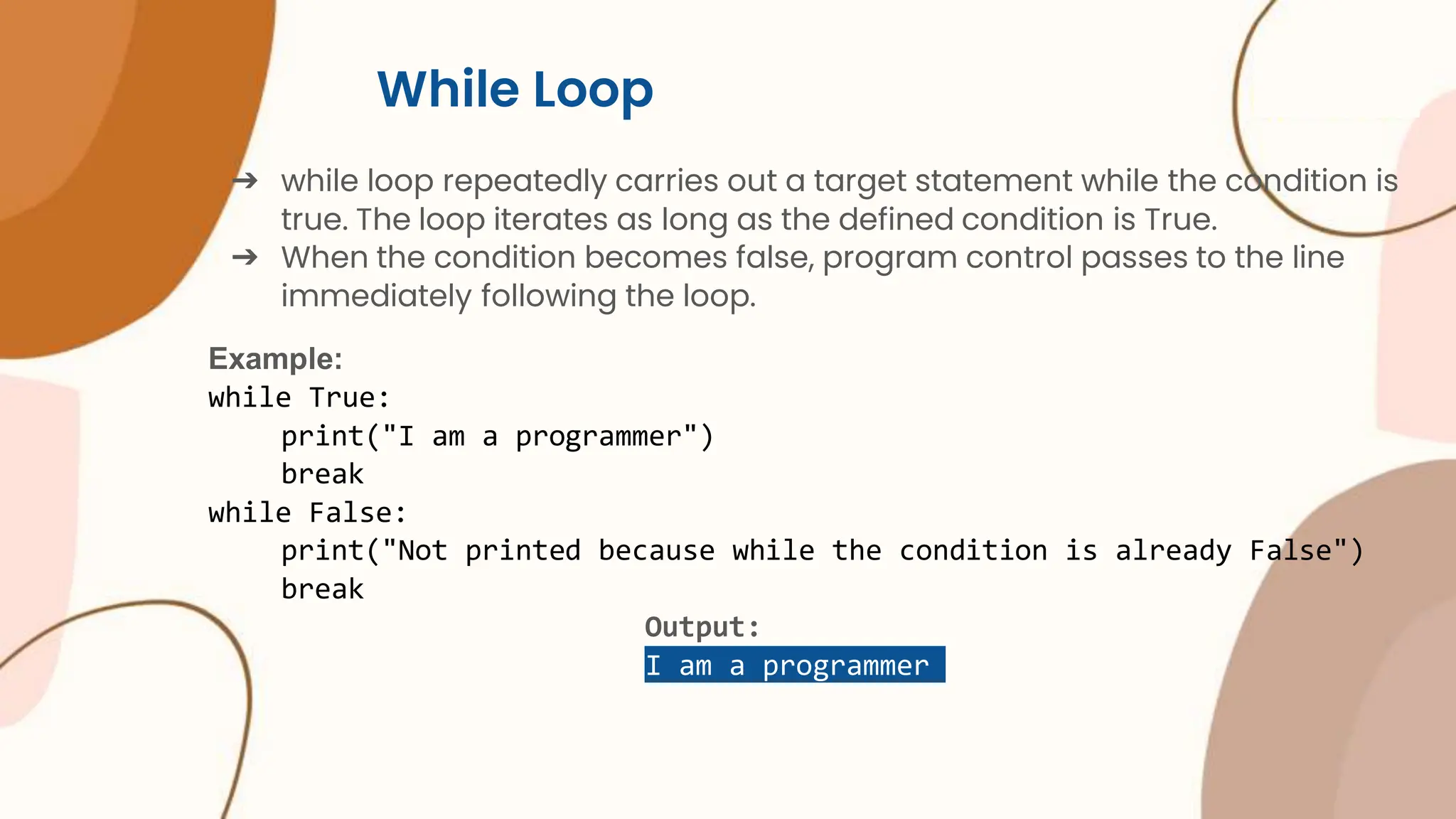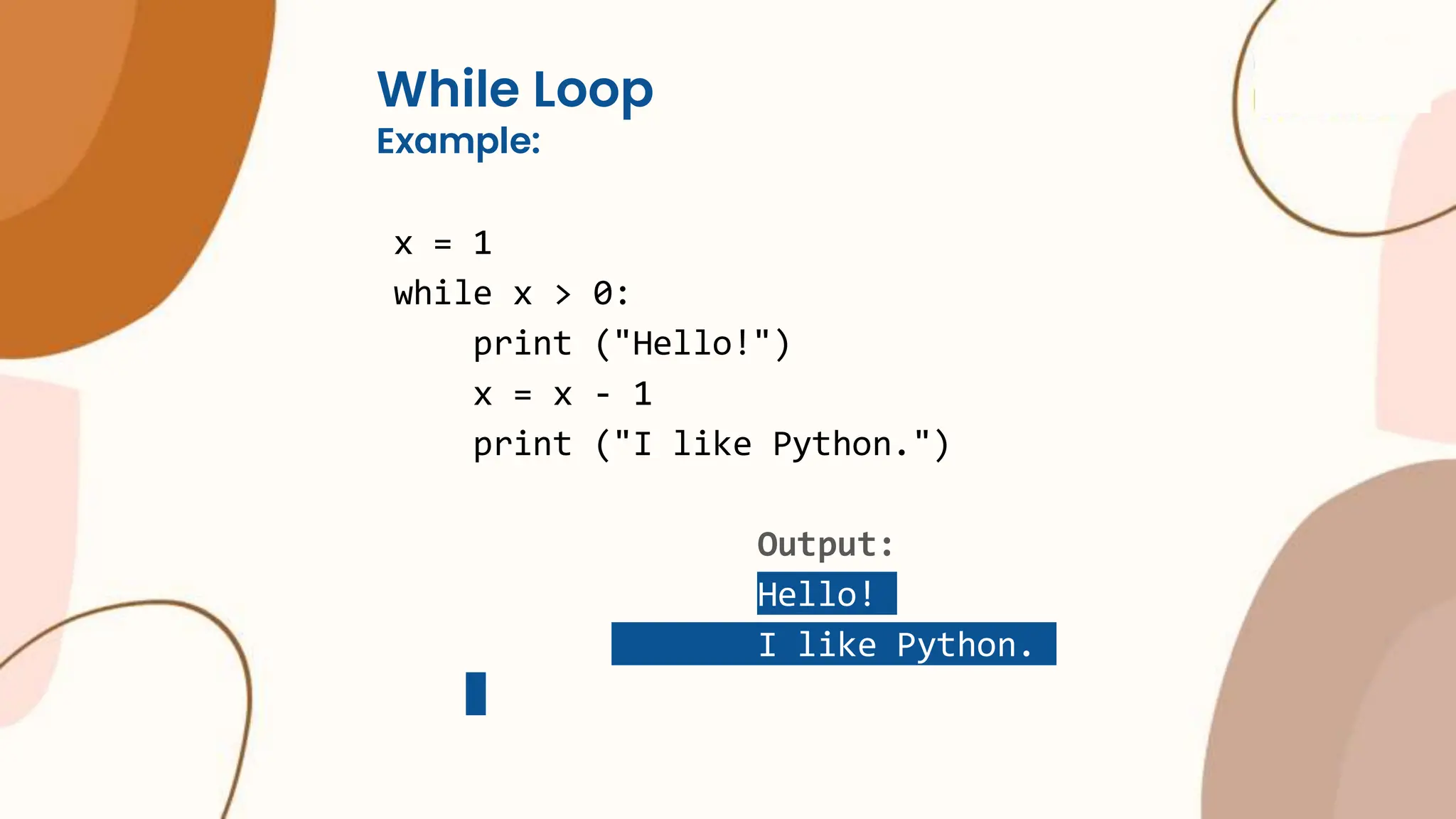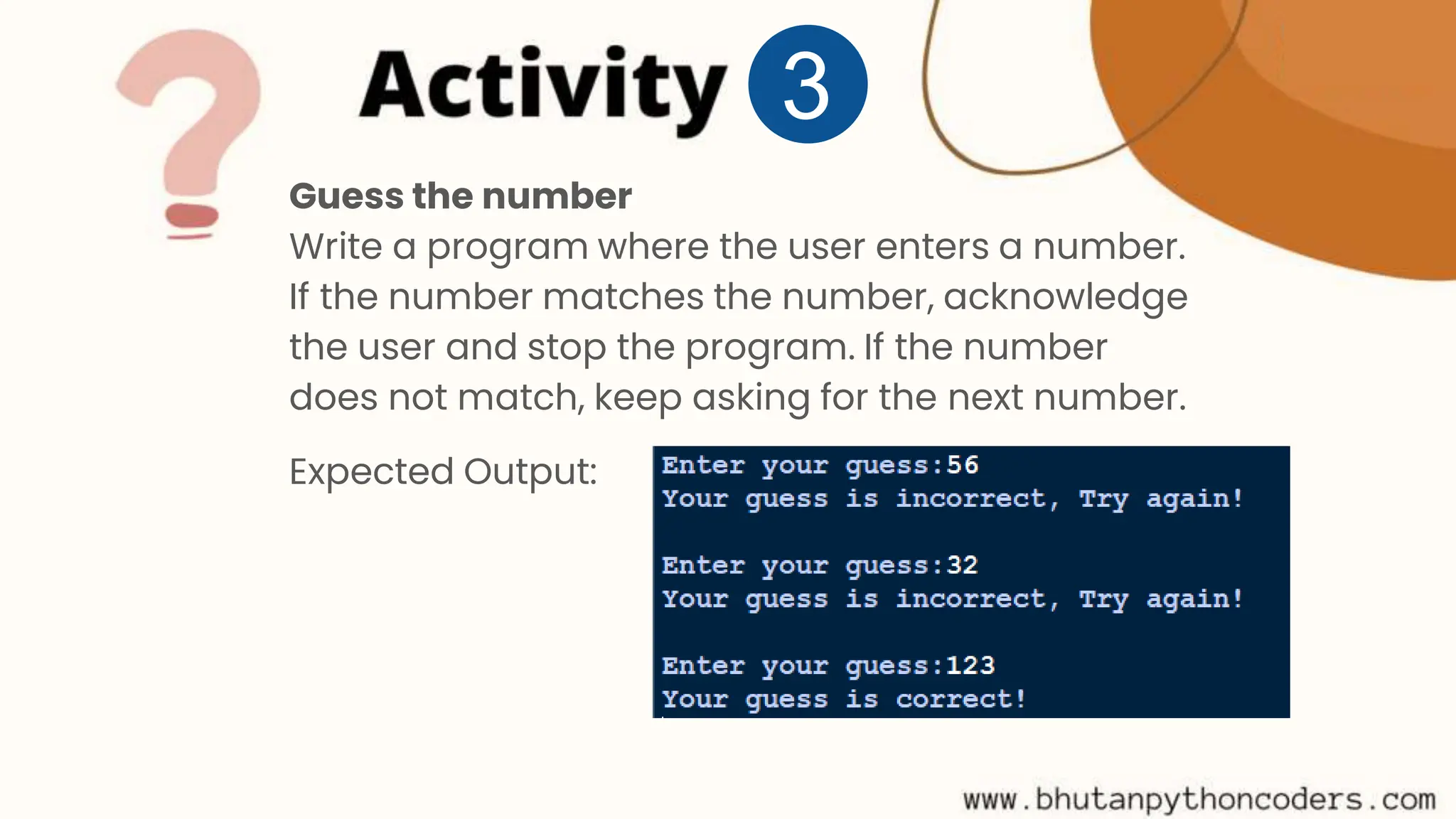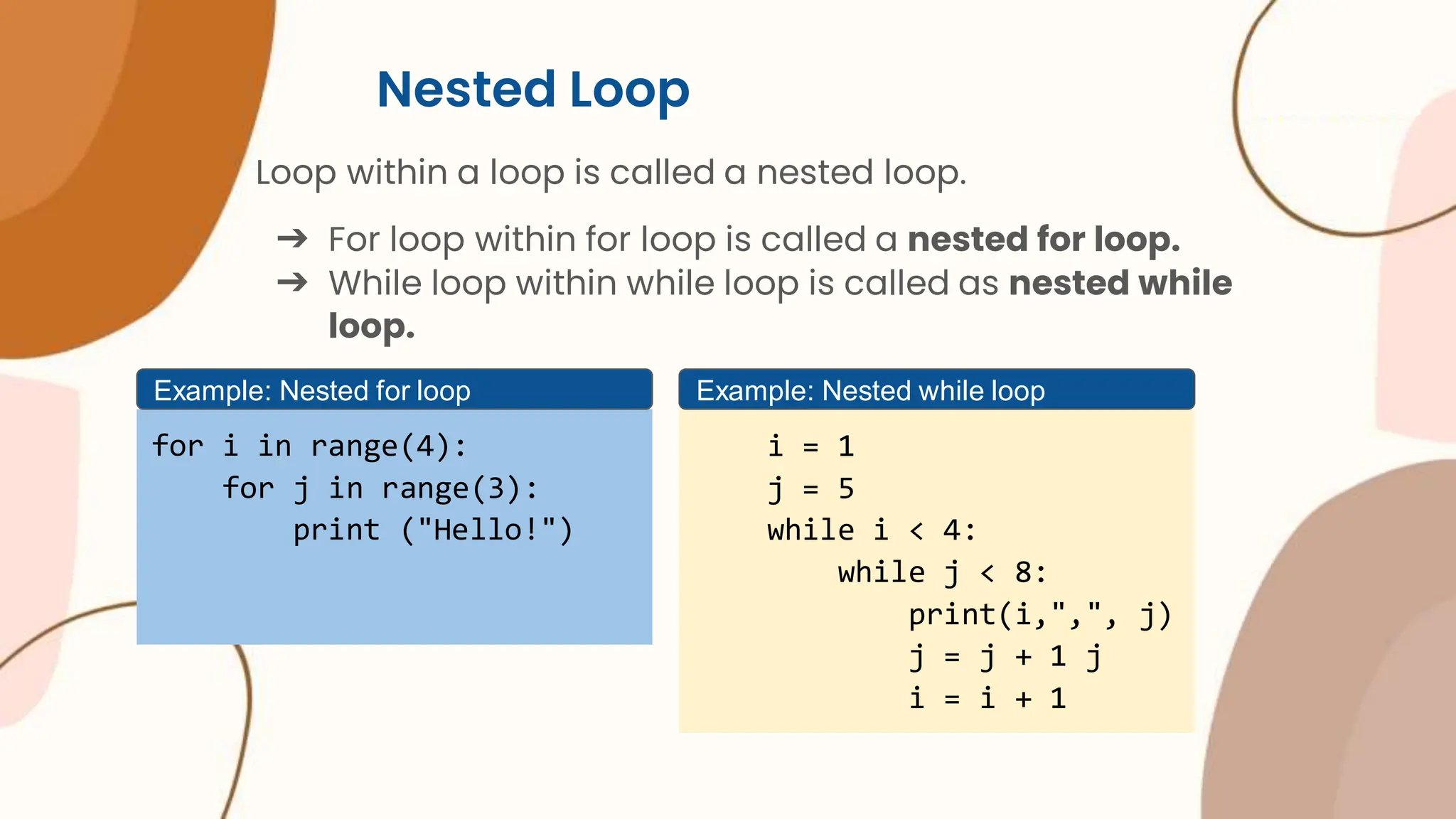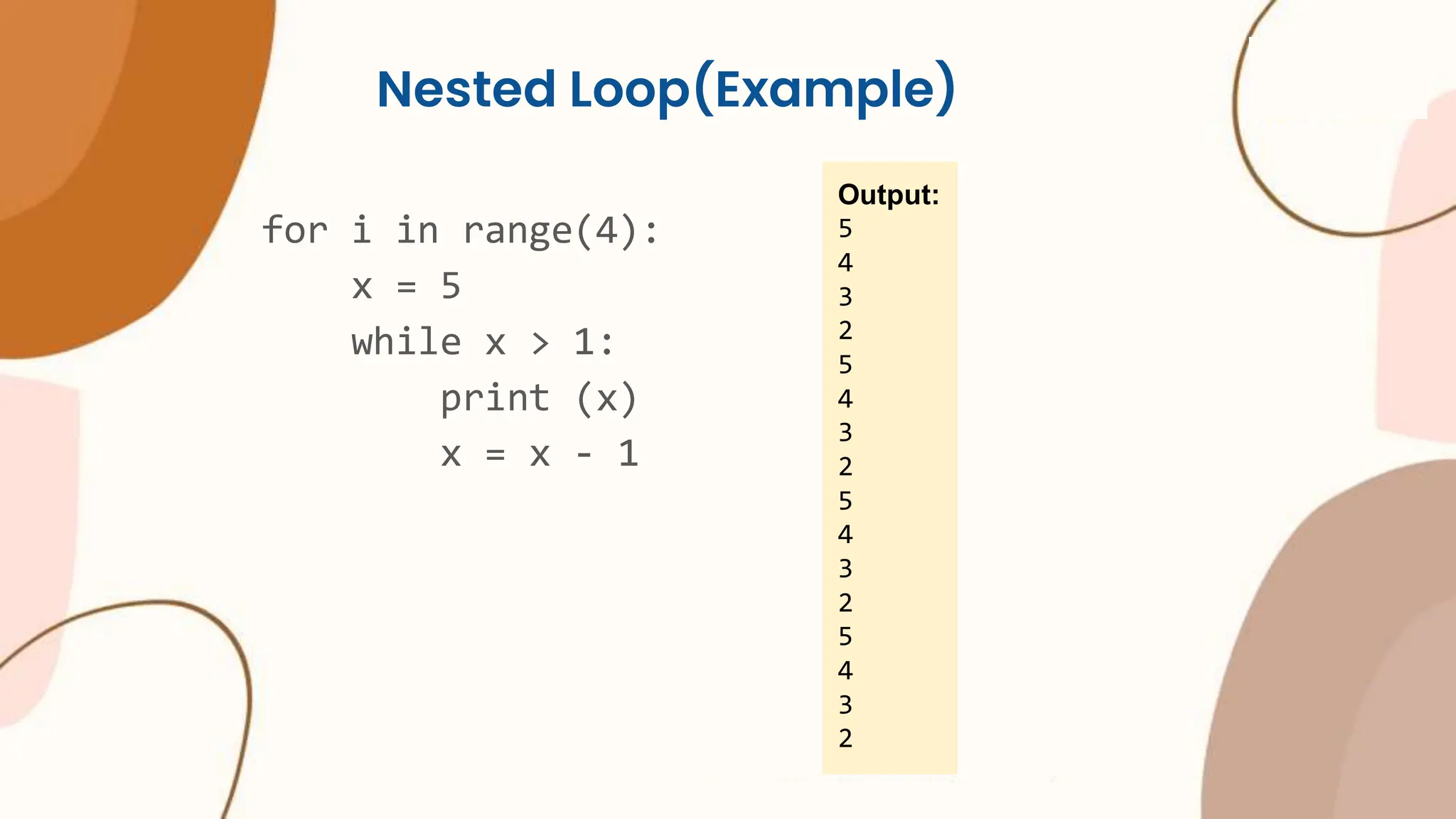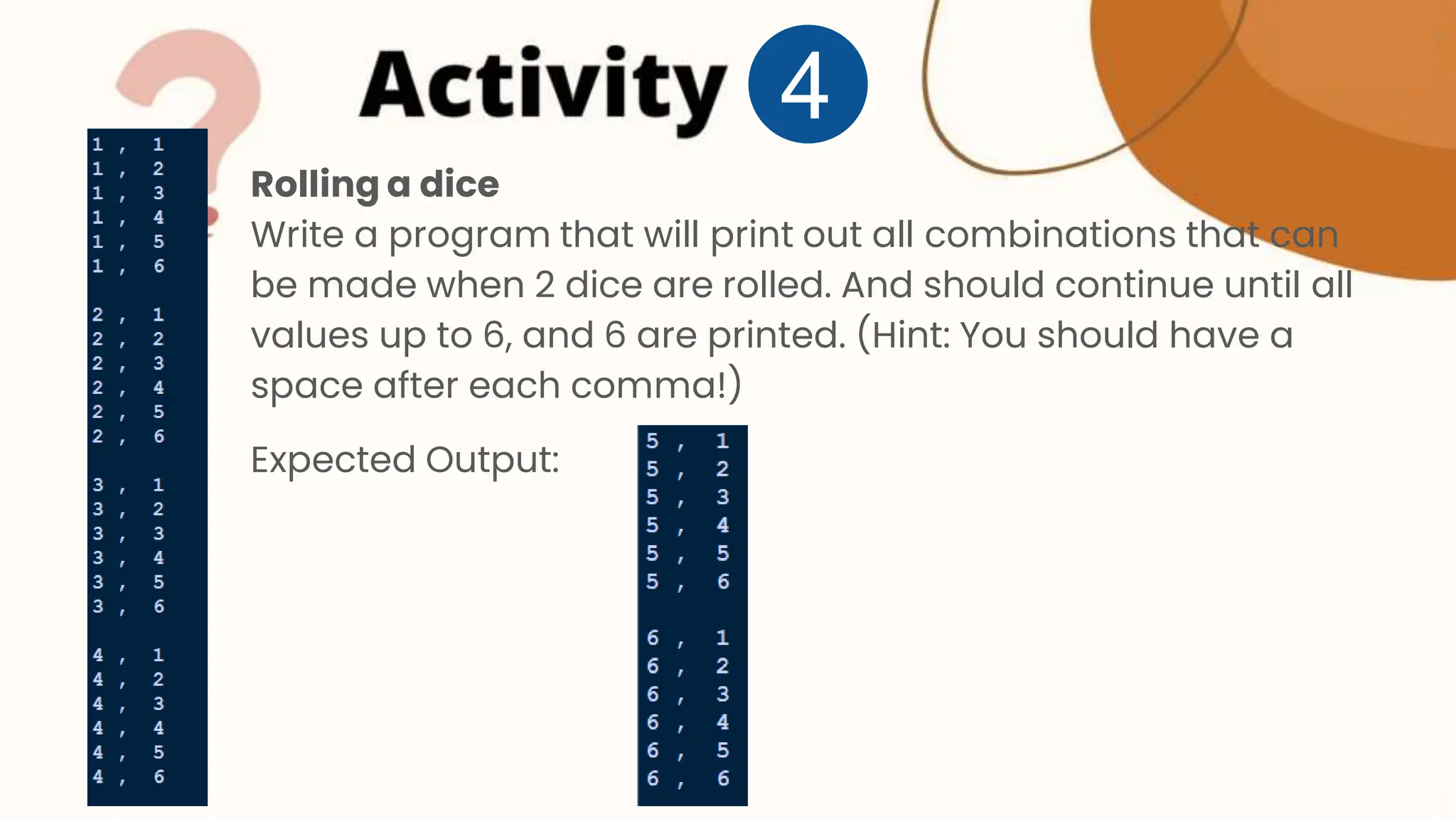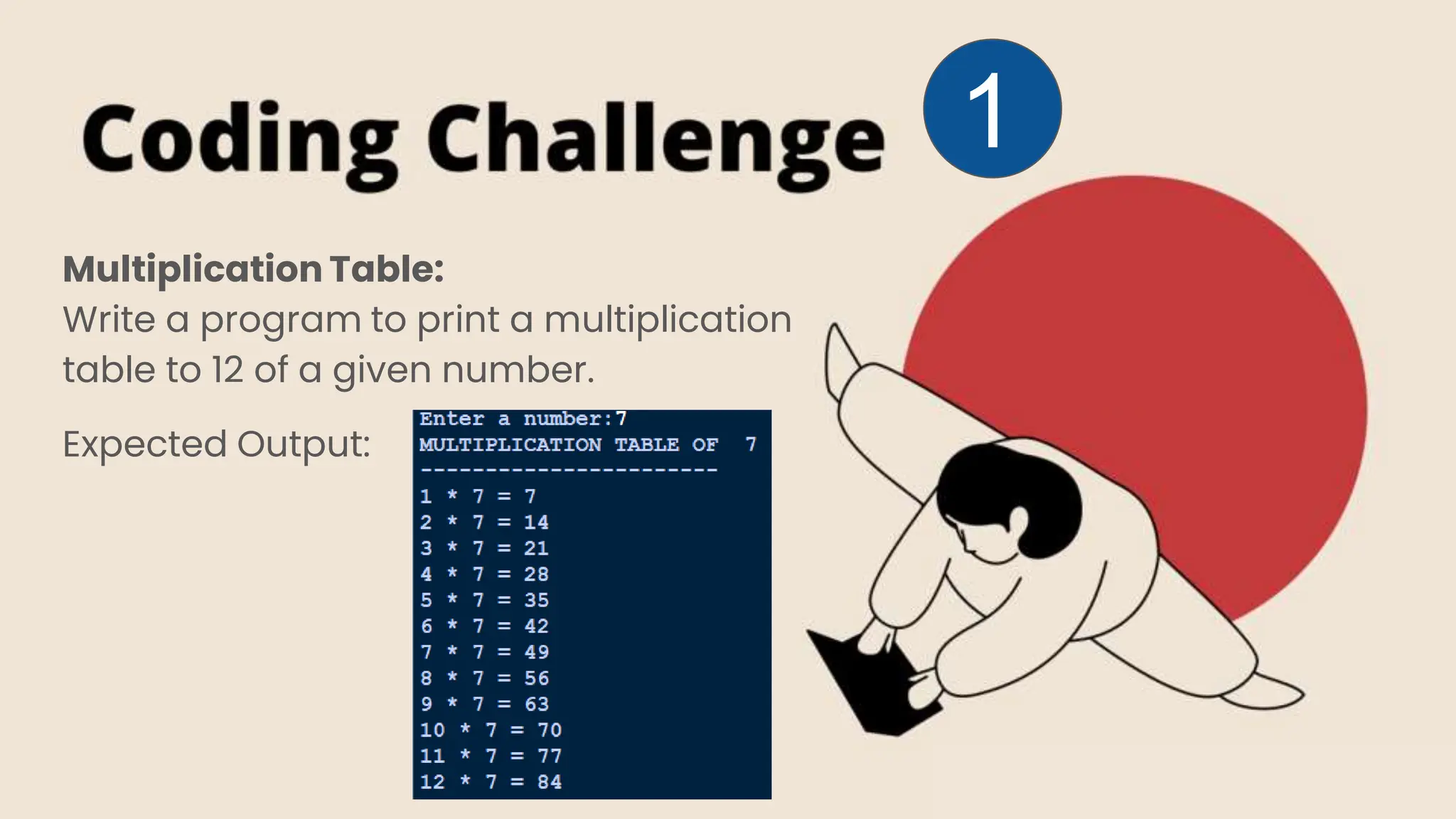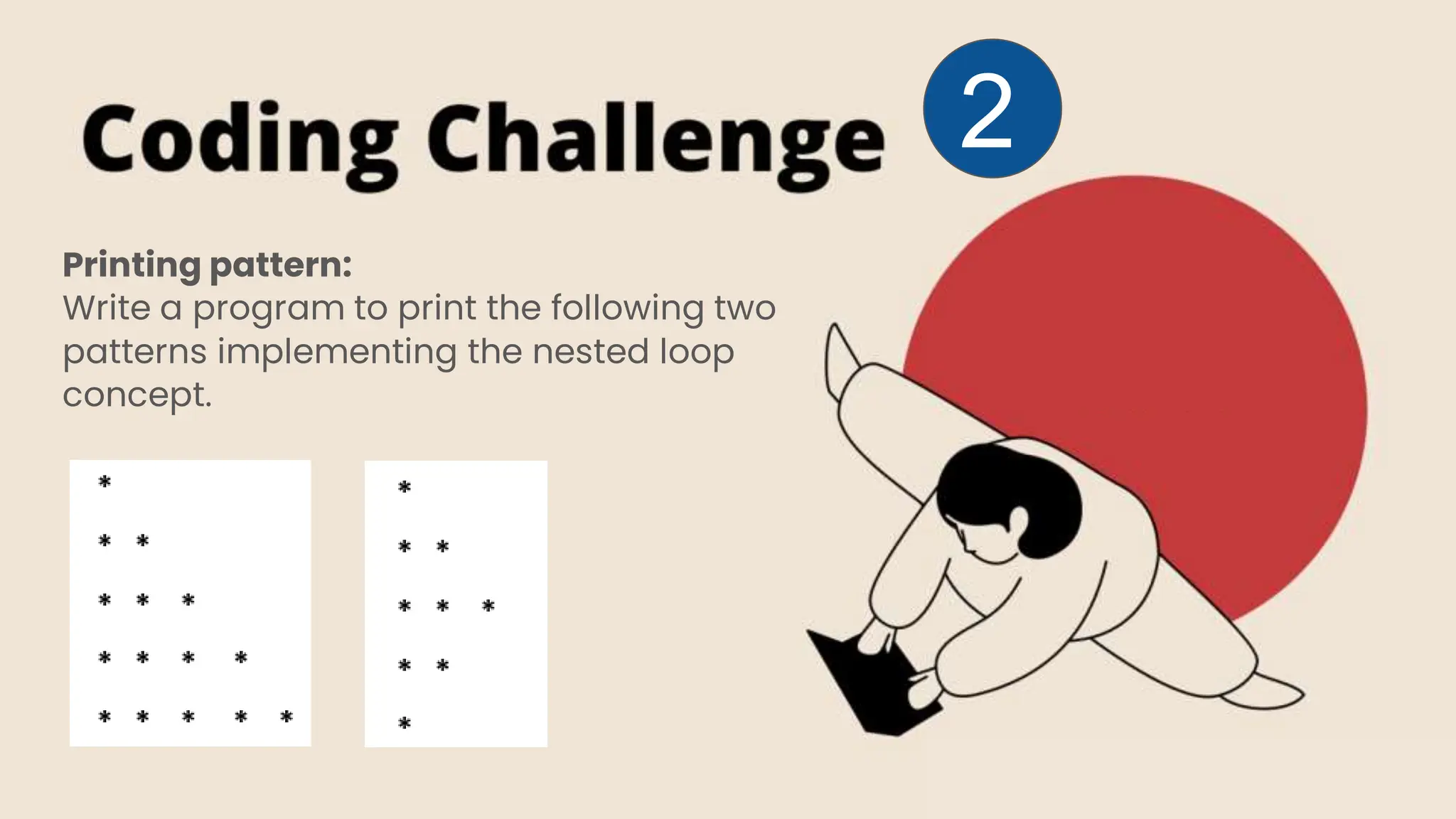This document discusses loops in Python programming. It covers for loops, range functions, break/continue/pass statements, booleans, while loops, and nested loops. Some key points: - For loops iterate over sequences like lists and strings, while loops repeat code while a condition is true. - Range functions generate numeric sequences for use in for loops. They can specify a start, end, and optional step size. - Break/continue/pass are loop control statements - break exits the loop, continue skips to the next iteration. - Boolean values are True or False and are used to check conditions in loops. - Nested loops involve loops within other loops, like a for loop inside a for loop.
